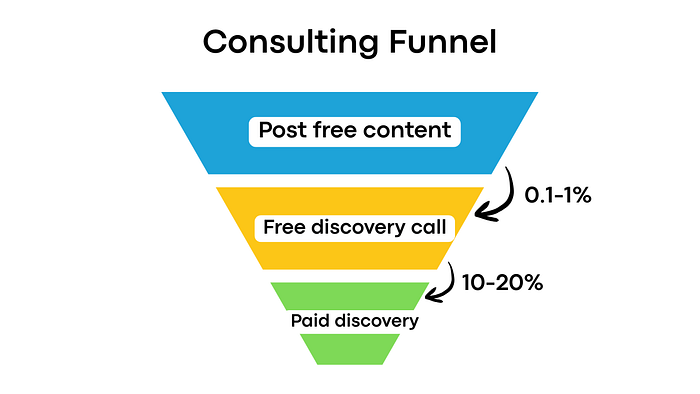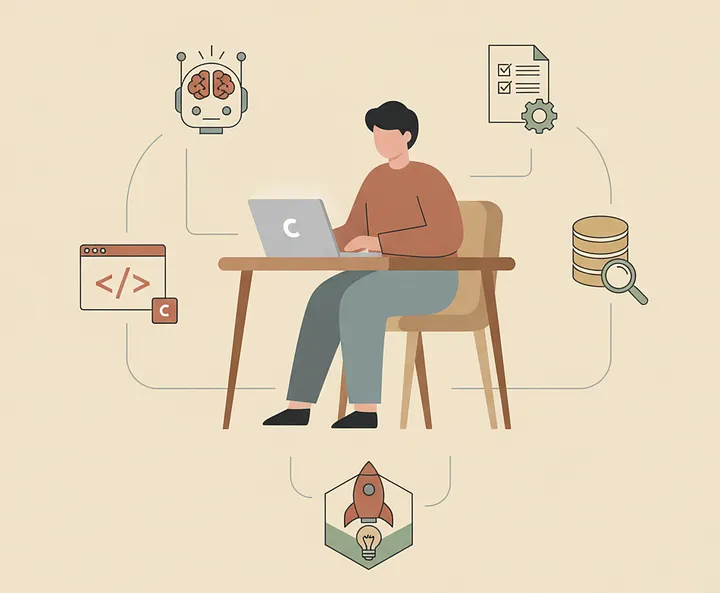5 technical side-hustles you can start this weekend
Most technical people I know are too smart to work for someone else. However, it’s not always obvious how to turn tech skills into income beyond a typical job. In this article, I’m going to break down 5 side hustles that technical professionals can start today to diversify their income.
Your 9–5 salary is safe… until it isn’t.
While a corporate job is the icon of stability, it is still one re-org or round of layoffs away from obscurity. Even if your paycheck is safe, there are far too many variables outside your control that limit your upside (e.g. limited advancement opportunities, manager change).
The root of the problem is that having just one source of income means your livelihood is entirely dependent on it. In other words, losing your job means your income drops to $0 overnight, and finding a new one may not be quick.
The best way to mitigate this risk (IMO) is to start a side hustle. This is work that you take as seriously as your 9–5, but outside working hours and on your own terms.
5 AI Side Hustles
If you have technical skills e.g. understand AI, know how to code, can manage technical projects, etc., then there are several ways you can make money from these skills while still working your full-time role. Here I’m going to share five such ways.
These are not just hypothetical ideas, but real ventures which I have personally made money from (and still do in some cases). Accordingly, at the end, I’ll reveal my real earnings (and effort) for each path.
Path 1: Freelancing
The strategy here is simple: do what you do in your full-time job but as a freelancer. This is effective because, one, you’ve already demonstrated your competence in it (by getting your current job), and two, the need is already somewhat validated since someone is already paying you to do it (your current employer).
Most freelancers I know (including myself) got their first client via one of two following ways.
- Referrals: letting people in your network know that you’re looking for contract work
- Upwork: a freelancing platform where you can apply to gigs directly
For example, my 1st client came from my PhD advisor to do data collection for a pilot research study. While getting this opportunity was largely due to luck, it gave me the confidence to get my 2nd client on my own via Upwork.
How to Freelance as a Data Scientist
Asking successful freelancers how they do it
medium.com
Path 2: Content Creation
The next side hustle is creating educational content about AI. What I like about this option is that even if I had made no money, forcing myself to explain technical topics via a blog post or YouTube video has been the most effective way I’ve found to learn new things.
There are 3 main ways to monetize content directly: put it behind a paywall, promote a product, or sell it to someone. While this can look many different ways, here are a few concrete examples from my experience.
- Paywalling stories on Medium and earning revenue via their partner’s program
- Monetizing YouTube videos (they run ads on my videos and pay me a percentage)
- Writing a blog post for a company
- Partnering with a brand and linking their product in a video’s description
Some other ways I’ve seen people in my network do this include:
- Creating a Substack with a paid monthly membership
- Doing sponsored posts on X
- Selling LinkedIn ghostwriting services
If these paths don’t resonate, there is another option. Instead of charging for the content or promoting 3rd-party products, you can use content to sell your own product or service (i.e. one of the other paths listed here).
From 0 to 70k: My (Technical) Content Creation Journey
Sharing my secrets and hard-learned lessons
medium.com
Path 3: Consulting
Another version of freelancing is consulting. While these are similar, the key difference in consulting is that instead of doing the “hands on keyboard” work, you help clients with strategic tasks (e.g. AI roadmaps, project management, picking use cases) and outsource the implementation work to contractors.
A common approach for this is to offer free discovery calls where you chat with clients about their problems and suggest ways you can help. An overview of my old consulting funnel with benchmark conversion rates is shown below.

Admittedly, I only did one engagement like this until realizing it wasn’t for me (too many meetings), but this is one of the most common (and lucrative) business models I see from other technical entrepreneurs.
The key benefit is that you are no longer limited by your time. You hire contractors and add a markup to their hourly rate, which makes your role mainly sales, project management, and recruiting.
Path 4: Education
These days, everyone is trying to learn AI, which has created a massive market for teaching it. While there are countless ways to do this, here I’ll focus on 3 modalities that I’ve seen work.
- Self-paced courses: think Udemy-style courses ranging from $10-$300
- Live, cohort-based courses: more like a traditional classroom since sessions are live, with a high ticket price point i.e. $500-$5,000
- Live trainings for companies: similar to previous modality, but the customers are businesses instead of individuals, which means even higher prices i.e. $5,000-$50,000
I’m currently offering cohort-based courses and live training sessions for companies. While creating the content can be a lot of work, the bigger challenge is getting customers. What works for me are content-based sales funnels, as shown below.

Path 5: Product
The biggest (and riskiest) opportunity for technical folks is to build a software product. It’s the biggest because it has an uncapped upside, but riskiest because it has a low probability of success (most products fail).
However, that doesn’t mean it’s not worth pursuing. In fact, I’d say this is the best path to pursue while working a full-time job. Here’s why.
If 90% of products fail, that gives you a 10% success rate. So if you build one product, there’s a 10% chance it works (not great), but what if you build 2 products, or 5, or 20?
The probability that just one of them works increases to 19%, then 41%, and then 88%! And since you have your bills covered with your full-time role, you can keep taking shots on goal until something works.
I’m currently on this journey (without a full-time salary) and of the two products I’ve built, I’ve made a whopping $45. I talk more about my experience in these posts: SaaS 1, SaaS 2
What I Learned Launching an AI SaaS (in 30 days)
My takeaways as a solo technical founder
medium.com
Income vs Effort
To provide some real numbers, I’ll share how much I’ve earned from each of these paths and the corresponding effort required. While this is real data, your experience may differ (be better or worse) from mine, so consider this just another data point rather than gospel.

Here are the raw data for the plot above.

Conclusions
A side hustle is the best way to mitigate the risks that come from relying on a single source of income. In the article, I shared 5 side hustle paths that technical professionals can start today and revealed the data behind my personal experience with these ventures.
I hope this article helped give you actionable insights you can apply to your own journey. If you have any questions about these paths or suggestions for future content, let me know in the comments 🙂
💻 Get 30 (free) AI project ideas: https://30aiprojects.com/


